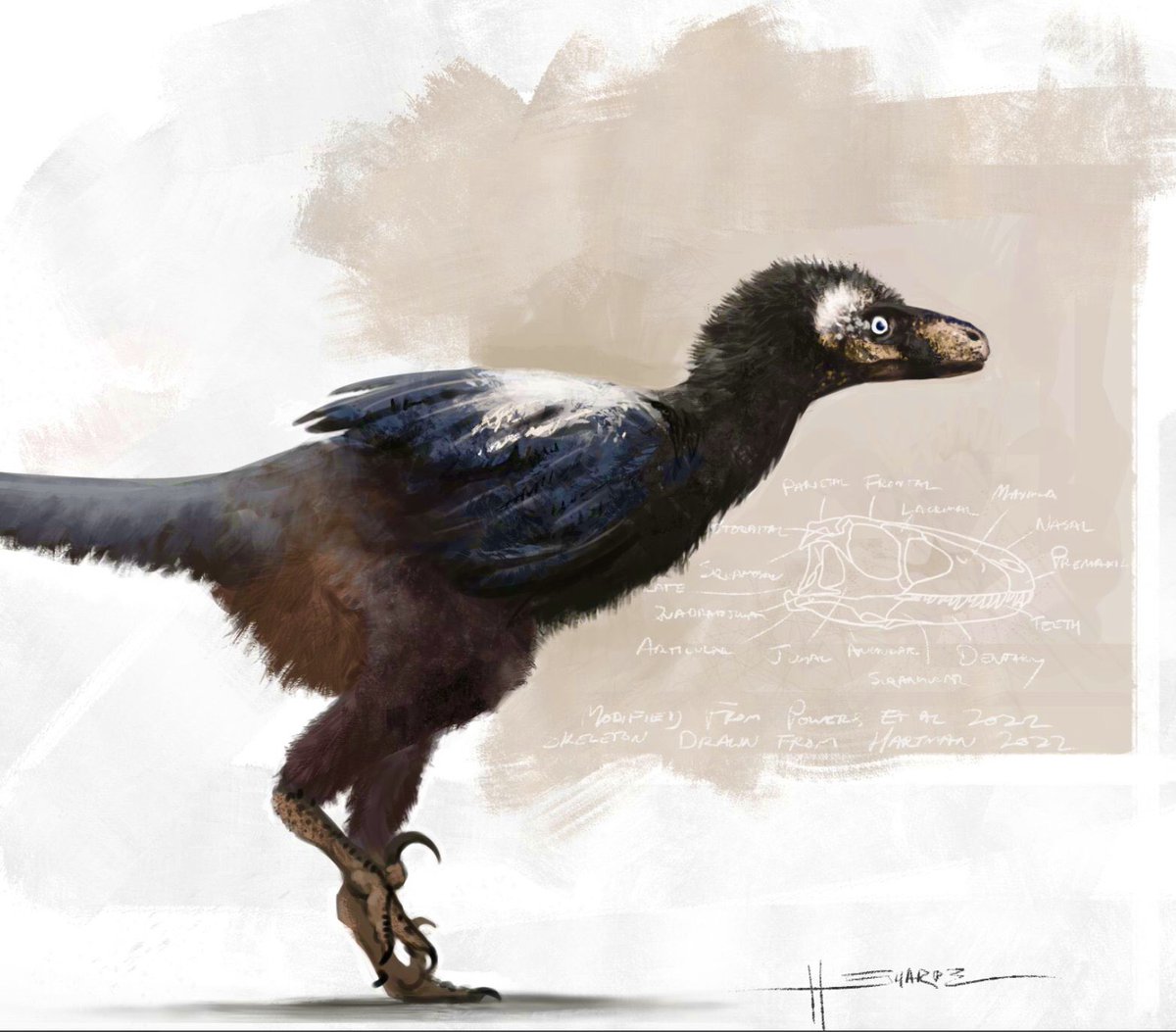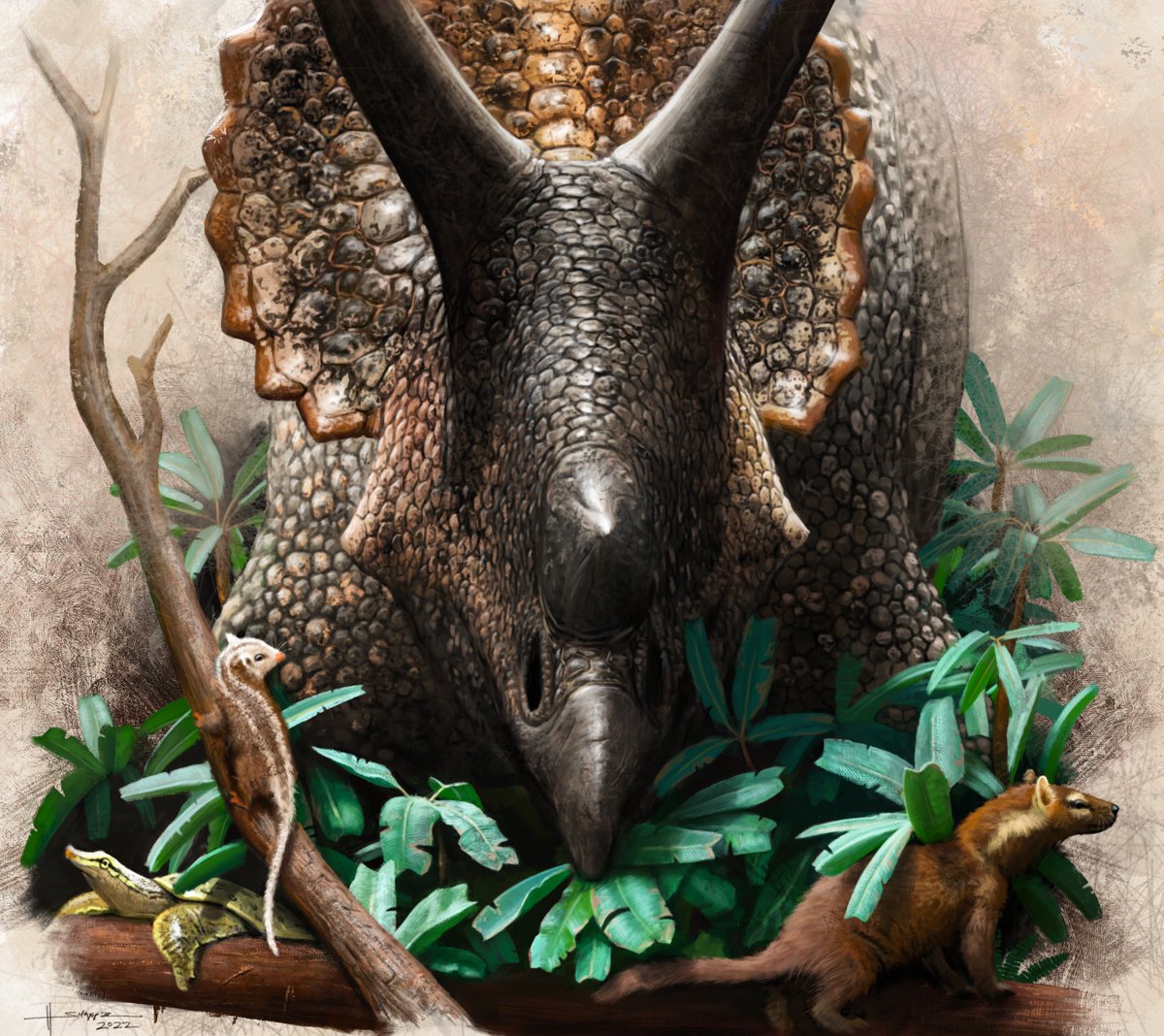Thought experiment: a mountain-adapted hadrosaur scaling near-vertical cliffs like modern goats and sheep disturbs a nesting pterosaur
Histology continues on ze big Edmontosaurus cheekbone #FossilFriday
Happy Deinonychus Day!
UAlberta student @MarkPowersJ’s thesis outlined a new, short-snouted skull shape for Deinonychus - turns out what was thought to be part of the maxilla was actually the premaxilla!
late #FossilFriday, spent yesterday doing a quick photogrammetry of a cast Albertosaurus skull. The re-assembled skull will be used for an updated illustration from my 2020 drawing
In bipedal animals, one femur has to support the entire weight of the animal during locomotion. Because of that, the width of the femur can predict the animal's mass.
This was extended to bipedal dinos in Campione et al. 2014 (great paper btw, link: https://t.co/9WygG7XuF4)
Think Spinosaurus' legs look kinda wimpy for its size? They are.
Let's dive in (pun intended) to why the current model of Spinosaurus as a bipedal fisher might be taking on water (look at these puns, holy ass).
A Triceratops disturbs a a softshell turtle, a eutherian (left), and a Didelphodon (right) while monching cycads
Painted for García-Girón et al. 2022














